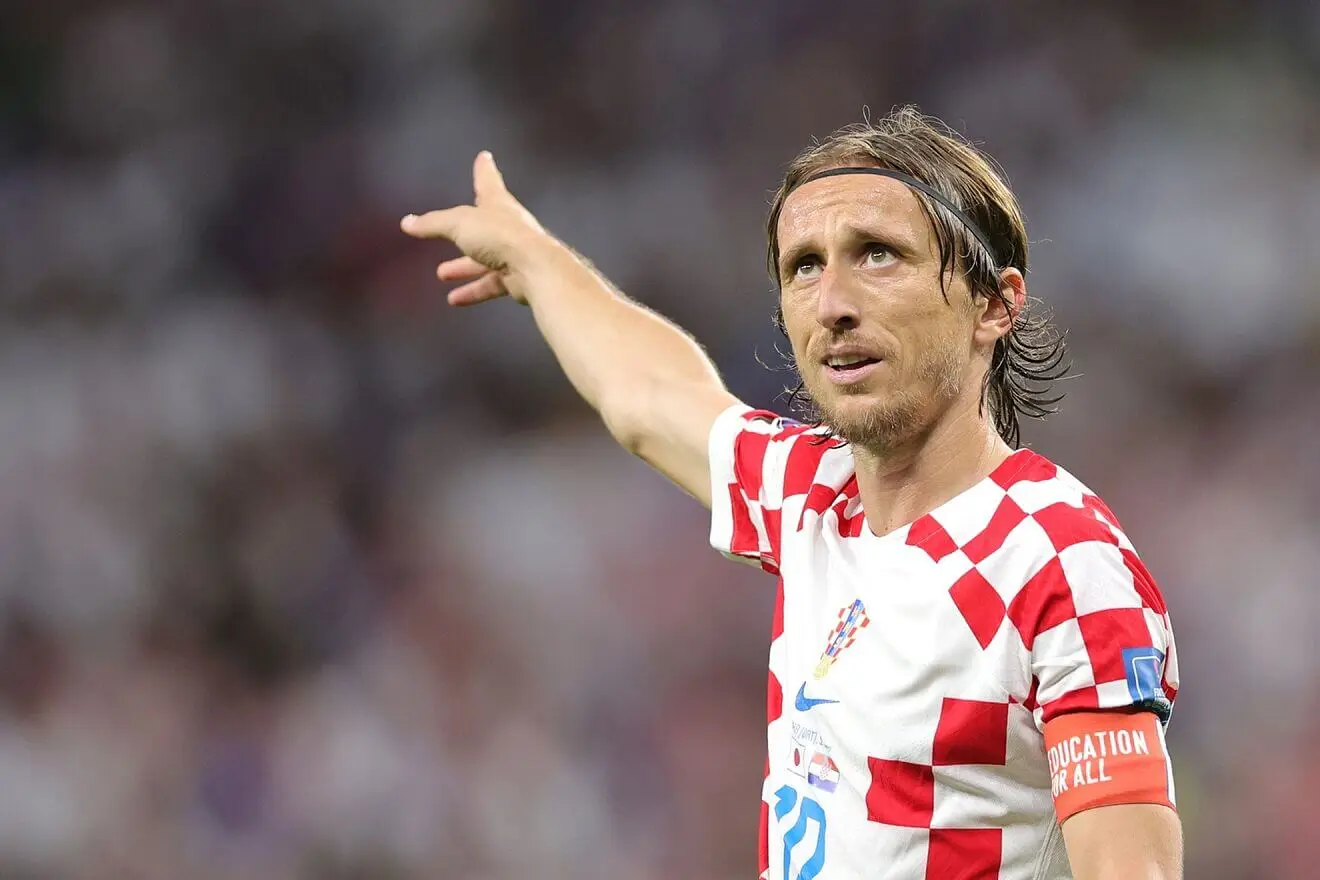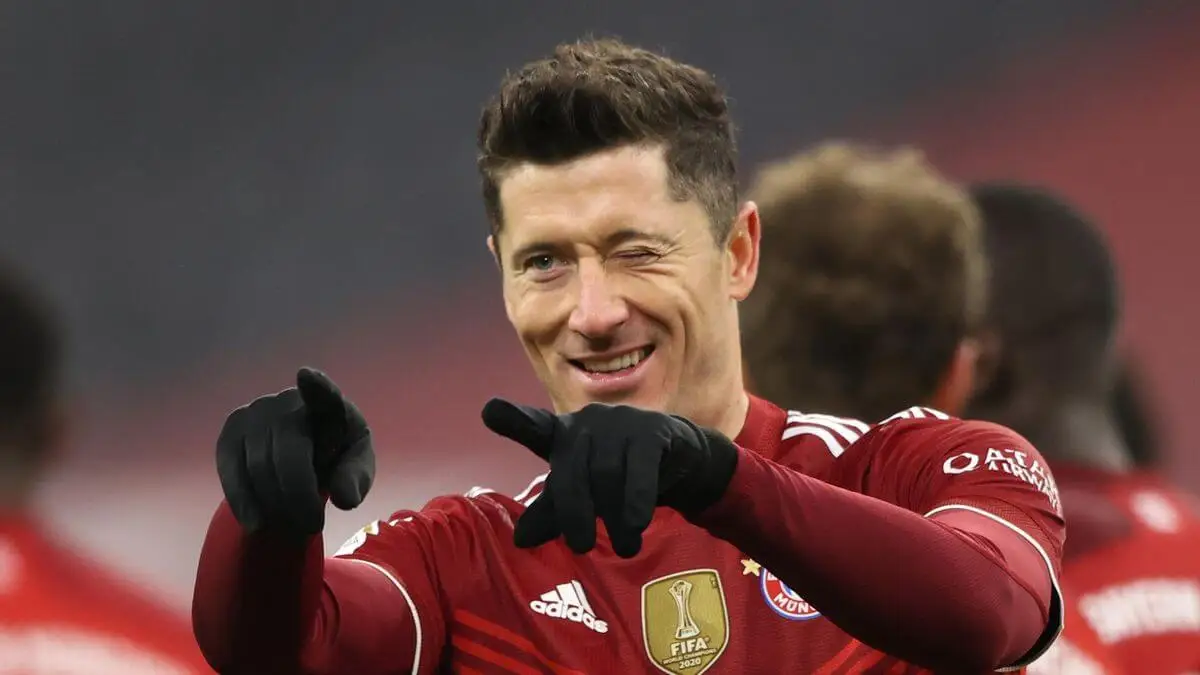The Secret of Longevity in Soccer: Training Routines and Diets


Reviewed and approved by the doctor Leonardo Biolatto
These days, we’re witnessing a striking phenomenon in the world of soccer: players close to 40 years of age are still playing at an elite level. Some even go over 40. This is due to many different factors. The secret of longevity in soccer is related to a disciplined training routine, accompanied by personalized diets and mental strength.
Read on to find out how the likes of Luka Modrić and Robert Lewandowski are still at the top after decades of careers!
What’s the secret to longevity in soccer?
Clearly, there’s no magic formula for maintaining physical performance at elite levels. However, it’s a fact that more and more soccer players are approaching the 40-year barrier in the world’s most competitive leagues. Many even surpass that age and are still playing at a good level.
This phenomenon extends to athletes in general, with cases such as Roger Federer, who retired from tennis at the age of 41. Meanwhile, basketball player LeBron James is still active with the Los Angeles Lakers at the age of 38.
Reaching this point is a combination of several factors, including mental work and discipline on the part of the athlete. In addition to this, technology for tracking and recovery also play a role. However, longevity in soccer is based on two main pillars: training routines and diets.
The most emblematic cases that reveal the secret of longevity in soccer
Elite soccer players have a team of professionals who are attentive to their own specific condition. The team is made up of trainers, physiotherapists, and nutritionists, who design specific plans that enhance the player’s conditions.
Here’s a short list of active or recently retired soccer players at an age that would have been hard to imagine a few decades ago:
- Zlatan Ibrahimović. After a 24-year career and more than 500 goals, the Swede retired at the age of 41. He did so while playing for Milan of Italy and was Serie A champion in 2022.
- Luka Modrić. He remains active at the age of 37, playing at an excellent level for Real Madrid and was a semi-finalist in the World Cup in Qatar 2022.
- Cristiano Ronaldo. At the age of 38, the Portuguese player moved away from elite soccer, but continues his career in Saudi Arabia.
- Gianluigi Buffon. The Italian goalkeeper is still with Parma at the age of 45, and made 19 appearances last season.
- Lionel Messi. At the age of 35, he was a World Cup winner, and is still in great form and will continue his career at Inter Miami next season.
- Giorgio Chiellini. The Italian defender played until 2022 at Juventus and is still active in the U.S. league at the age of 38.
- Thiago Silva. This Chelsea player is the same age – he was Brazil’s captain at Qatar 2022.
- Andrés Iniesta. Despite not playing many matches in 2023, he’s still active in the Japanese league at the age of 39.
In addition, historic footballers such as Ryan Giggs, Paolo Maldini and Javier Zanetti retired at the age of 40 after extensive careers and fit finishes.
Zlatan Ibrahimović
In June 2023, Ibrahimović (see the lead picture) retired from professional soccer. Before his retirement, he was playing in one of the most important leagues in the world, and scored 8 goals in 23 games during Milan’s last title season in 2022, although he did suffer from knee and Achilles tendon injuries.
Zlatan stayed in prime form until the last moment thanks to a training program designed especially for him, in which fitness was prioritized over on-field exercise.
The Swede shared a video on his social networks where he can be seen performing the following:
- Crisscross. Crossing his extended legs with his arms behind the head and exercising abdominal contractions.
- Alternating V-up. Starting from a seated position, one leg is lifted until it touches the inverted arm.
- Leg raises. Alternating leg raises.
- Extended plank. A regular plank but alternating the right and left arm.
- Taekwondo. Zlatan is a specialist in taekwondo. He never stopped training in this martial art, even obtaining an honorary black belt.
The secret of longevity in soccer for Luka Modrić
The Croatian remains at the top of his game thanks to several factors, such as his talent, mental strength, and the technique and intelligence of his game. Regarding the physical aspect, the one responsible for his endurance is the kinesiologist Vlatko Vucetic.
This man was a professional runner and athletics champion, so he uses that knowledge to perform cross-training on the Real Madrid footballer. The idea is to practice a different discipline from professional exercise, but one that works as a complement for the development of new skills.
In the case of the Croatian, he plays tennis, another sport of his liking. Vucetic also prioritizes motor intelligence, as well as the use of elastic bands to maintain muscle flexibility.
In addition, he closely monitors the player’s reactions and reflexes using elements typically found in running. The presence of technology in applications and measuring devices is also vital in extending the longevity of athletes.
Modrić revealed that he’s careful not to eat junk food, basing his diet on fish, eggs, and chicken. He avoids carbohydrates at night and complements his diet with protein shakes.

Robert Lewandowski
The 34-year-old Pole is still one of the best strikers on the planet and plays for Barcelona. He has also broken numerous records in the German league, thanks to his perseverance and demanding physical routine. Part of Lewandowski’s success while wearing the Bayern Munich shirt, as well as that of his entire squad, is attributed to fitness trainer Holger Broich.
By focusing on muscular strength, the professional has ensured that the striker maintains excellent athletic endurance, as well as great strength in the face of injury. Like Modrić’s trainer, Broich relies on cross-training to complement Robert’s skills. In his case, he practices martial arts, which he’s a fan of.
But the Pole’s routine wouldn’t be complete without healthy eating. In this regard, Lewandowski was clearly influenced by his wife, Anna Stachurska, a nutritionist and karate expert.
The striker integrates the following meals into his eating routine:
- Breakfast: Whole-grain bread, fruits, and vegetables with rice, coconut, or almond milk.
- Pre-match: Red rice, avocado, almonds, tuna, and chicken.
- Postgame: Avocado and vegetables such as broccoli, carrots, and spinach.
Read more: Robert Lewandowski: The Diet that Keeps Him at the Top

Cristiano Ronaldo
Although he has moved away from the world’s top leagues, this Portuguese striker continues to play in Saudi Arabia and is giving some great physical performances. At the age of 38, he’s noted for a life with very few injuries. This is partly thanks to his diet and his demanding training sessions.
Ronaldo revealed that he works post-match with cryotherapy, i.e. cold therapy, which helps his muscle recovery. He also practices swimming twice a week and combines it with pilates exercises.
Besides that, he eats a diet rich in juices, fruits, avocados, eggs, and cheese for breakfast. Daytime meals include fish, chicken, cereals, and vegetables. At night he often eats legumes.
Another of Ronaldo’s secrets is the food he avoids:
- Alcohol
- Sugary drinks
- Precooked foods
- Frozen foods
- Commercial sauces

Exercise, nutrition, and discipline are the secrets of longevity in soccer
Research by different health-related organizations, such as the WHO and the American Heart Association, recommend at least 30 minutes of exercise every day. This activity favors health, regardless of whether or not you’re an elite soccer player. In turn, according to a study by the Mexican Journal of Clinical Pathology and Laboratory Medicine, adequate food intake promotes metabolic health and prolongs sports life.
Read more: Injuries Cristiano Ronaldo has Suffered
So, you may not be an award-winning athlete in the big leagues, but, if you exercise and eat well, you’ll achieve:
- Decreased body fat
- Tissue strengthening and improved flexibility
- Maintain or increase muscle mass
- Improved self-esteem and mood
- Reduced stress, anxiety and depression
The influence of multiple factors, some of a technological nature, is the reason why soccer players are playing in their late 30s and even 40s. The athlete’s determination to remain in top competition, as well as his ability to reinvent himself and readapt his game, can’t be ignored.
But none of that would be possible without a demanding exercise routine and a healthy diet, both carried out with firmness and responsibility.
All cited sources were thoroughly reviewed by our team to ensure their quality, reliability, currency, and validity. The bibliography of this article was considered reliable and of academic or scientific accuracy.
- Aparicio García-Molina, V., Carbonell-Baeza , A., & Delgado-Fernández, M. (2010). BENEFICIOS DE LA ACTIVIDAD FÍSICA EN PERSONAS MAYORES. Revista Internacional de Medicina y Ciencias de la Actividad Física y del Deporte / International Journal of Medicine and Science of Physical Activity and Sport, 10(40),556-576. ISSN: 1577-0354. Consultado el 14 de junio de 2023. Recuperado de: https://www.redalyc.org/articulo.oa?id=54222122004
- Gallach Lazacorreta, J.E., González Moreno L.M.(2003). El entrenamiento cruzado: una posibilidad del mantenimiento de la forma ante lesiones unilaterales. Science Direct. https://www.sciencedirect.com/science/article/abs/pii/S1886658103760423
- Landinez Parra, N. S. (2012). Proceso de envejecimiento, ejercicio y fisioterapia. Departamento Movimiento Corporal Humano. Facultad Medicina Of. 519. Universidad Nacional de Colombia. Ciudad Universitaria. Bogotá, Colombia. Consultado el 14 de junio de 2023. https://scielosp.org/article/rcsp/2012.v38n4/562-580/es/
- Rivera-Cisneros AE, Sánchez-González JM, Murguía-Cánovas G, Lara MY, Gómez DM, Portillo-Gallo JH, Ballesteros-Gómez F, Ojeda-Martínez M, Félix-Inguanzo R, Barriguete MJA, Hernández MCR. (2022). La longevidad deportiva del futbolista está relacionada con su estado metabólico. Revista Mexicana de Patología Clínica y Medicina de Laboratorio. Número 1. Paginas: 25-29. Consultado el 14 de junio de 2023. https://www.medigraphic.com/cgi-bin/new/resumen.cgi?IDARTICULO=108005
- Sandra M.M. MATSUDO. (2012). Actividad Física: Pasaporte Para La Salud. Revista Médica Clínica Las Condes, Volume 23, Issue 3. Pages 209-217. Consultado el 14 de junio de 2023. https://doi.org/10.1016/S0716-8640(12)70303-6
This text is provided for informational purposes only and does not replace consultation with a professional. If in doubt, consult your specialist.








